Geoff Nicholson's Blog, page 39
February 11, 2018
LONDON THEMES

I was in London for one reason or another. There had been a plan to go for a walk with Iain Sinclair but that fell through because, as he put it, “I did some damage a while back, jumping out of the way of a sudden-turning taxi. All was well. But after coming back from the Hebrides, some of the calf problems returned on London pavements. I need to take a break - and, if possible, see a wonder worker.” No arguing with that.
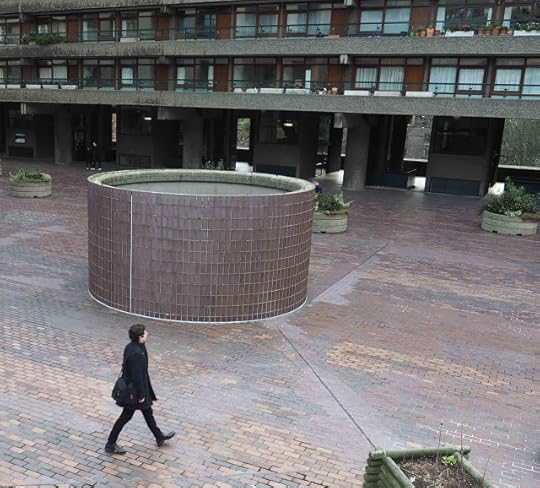
And of course I walked anyway, sometimes on my own, sometimes with one or two others, and I looked around, took pictures, and at times observed my fellow pedestrians, most of them just walking as part of their everyday lives and business, others perhaps on some kind of drift or specialized walking project – you can’t always tell with these things, although I did see one or two groups of tourists who were being herded around on organized walking tours – they tended to look simply bemused.

I had the sense in central London of walking around a giant building site, that will become a post-Brexit, giant architectural theme park. There are cranes and scaffolding everywhere. And this is in one sense exciting – new forms and new possibilities are coming into being. There’s an optimism, a confidence, a belief that the city does have some kind of future, even if an uncertain and contested one.
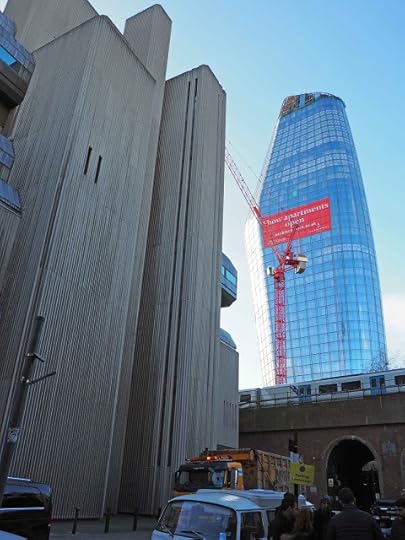
On the other hand, most of us will only ever walk past these glossy new architectural constructions. They really don’t involve or embrace the “average” Londoner, whatever that is. We are certainly never likely to live in any of the new super luxury flats. And I suppose you could argue that this has always been the way of things , as true of Centre Point as of Buckingham Palace: you walk past, you see the exterior, you know in broad terms what you’re looking at, but you don’t get invited inside. Nobody’s building any people’s palaces.

Where there’s change there’s also decay. There was a short period of my life when I worked as a gallery attendant at the Hayward Gallery on the South Bank, and every day I’d walk out of Waterloo station and go into a kind of pedestrian tunnel/bridge that ran through the Shell Centre.

The building is still there, and a little research reveals that it’s still owned by Shell, though I couldn’t see any external sign to that effect.
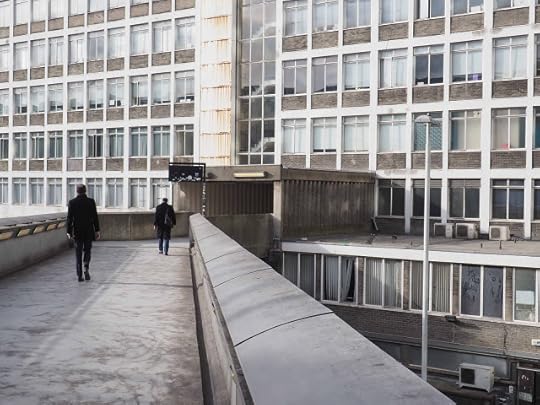
But whereas it once looked like a smart, if slightly old-fashioned, 1950s office block, it now looks in significant decline. Of course some of us enjoy a good bit of significant decline.

And I suppose street art flourishes in these times of transition. When buildings are being built or demolished, when there are hoardings around them, people don’t get too upset about works of art painted on boards or abandoned walls, although presumably once the sparkling new architectural masterpieces are finished the artists are going to be way less welcome.
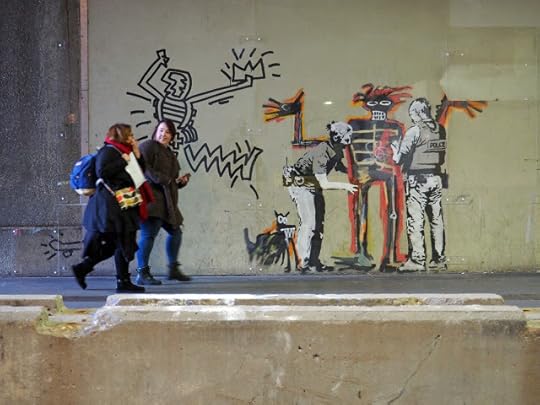
And it may just be me, but I got the feeling there was something a bit last millennium about London’s street art. I mean Banksy is obviously a good guy, but does his art really need to be protected by large sheets of Perspex? Isn’t street art meant to be transient and at the mercy of the elements, human and otherwise? And do I really need to be able to buy a Banksy in an art gallery in the spruced up Shipping Container House? Well no, I do not and I wouldn’t be able to afford one even if I did.
On the other hand, it’s hard to walk down Goodge Street and not be somehow moved and uplifted by this depiction of Theresa May, not by Banksy as far as I know, and not under Perspex either.
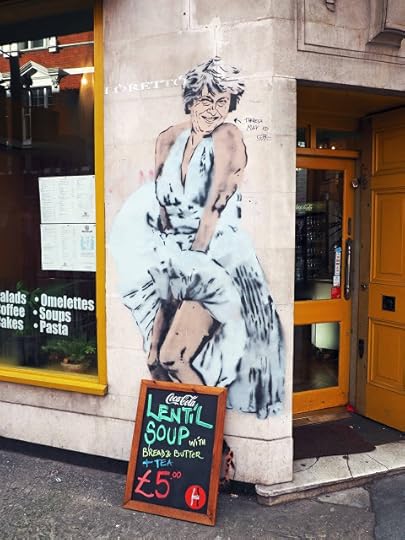

Published on February 11, 2018 06:51
January 25, 2018
WALKING AND LOCOMOTION


As you see, from the above communication, I have been rejected by Nike. I applied to be a shoe tester. I filled in a form. I answered the questions. I told the truth where I thought that would be an advantage, and told lies when I thought that would. But it has come to nothing. I have been weighed and found wanting. I shall have to continue to pay for my own shoes.
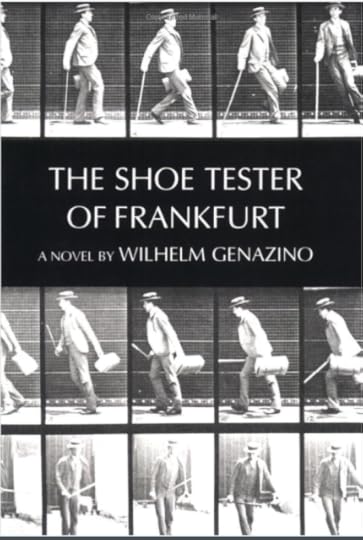
Why did I apply to become a shoe tester? Because I just finished reading a novel by Wilhlem Genazino titled The Shoe Tester of Frankfurt. It’s a good book in which our hero wanders the city having deep thoughts, many of them about women, and all the time wearing shoes that he’s testing for a company. Eventually he gets screwed over by the company: they offer less money and worse terms, and he’s reduced to selling the shoes he’s tested at a street market. In fact the lads currently in charge at Nike didn’t offer any payment whatsoever, and if I’d been accepted I’d have had to return the shoes once I’d tested them, at my own expense, so it wasn’t the very best deal in the world. I just wanted to be part of a literary tradition.
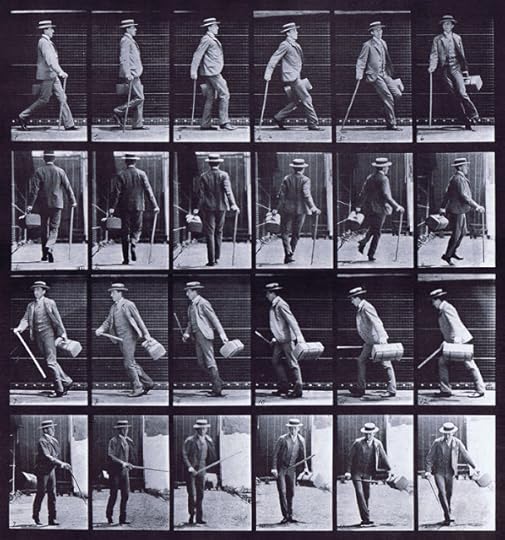
As you see above, the jacket design for The Shoe Tester of Frankfurt, incorporates images by Eadweard Muybridge, this one titled “Plate 49 – Clothed Male Walking, Turning Around Rapidly, Satchel in One Hand, Cane in Other.”
You might think that’s a rather unnecessarily full description and you might wonder why anybody would bother to specify that he was clothed. Well, the fact is Muybridge made a total of 781 plates – quite a few of animals of course including horses, and five just of hands – but most of them show people in motion, a few of them walking. This is plate one:

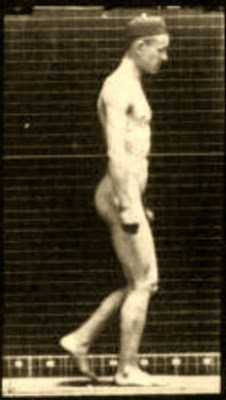
Now Muybridge obviously knew his market. However scientific and artistic his photographs, he realized that the human body is a lot more compelling when it’s naked than when it’s clothed. Out of that total of 781, 133 are of nude men, 62 of women “in transparent drapery and semi-nude,” 180 of women completely nude and, it being a different era, 15 plates of nude children. And the appeal of nudity certainly applies when it comes to descending a staircase.

It’s hard to imagine that Duchamp would have been quite as inspired by this image:
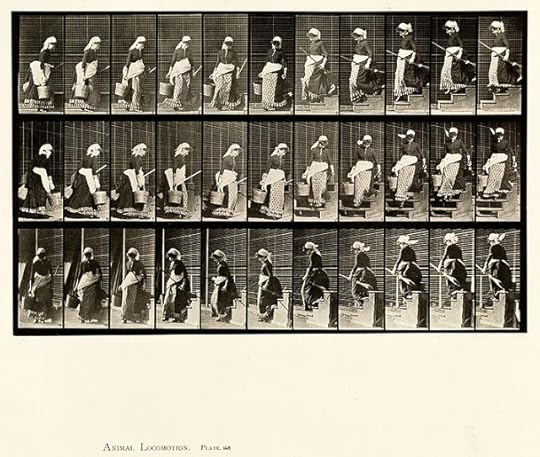
as he obviously was by this one:

In any case, a Muybridge image is a very fine thing to have on the jacket of your novel about walking.
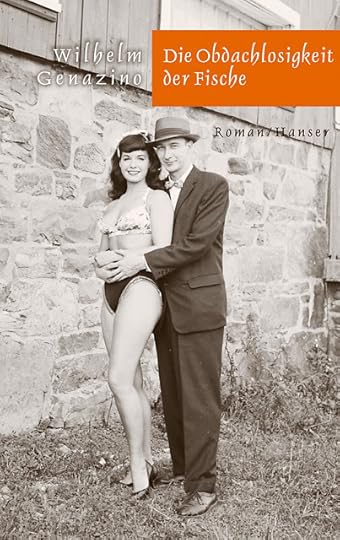
Incidentally, Wilhlem Genazino is also the author of a novel titled Die Obdachlosigkeit der Fische, which (I believe) translates as The Homelessness of Fish, although as far as I can see there’s no edition in English. I can’t absolutely swear what it’s about, and Wikipedia with Microsoft translator is only a partial help: “The Osprey, the stability through phone book and the sheep are described in sometimes unexpected twists - of the sheep in the field of view are for example ‘appalling taste kotete buttocks.’”
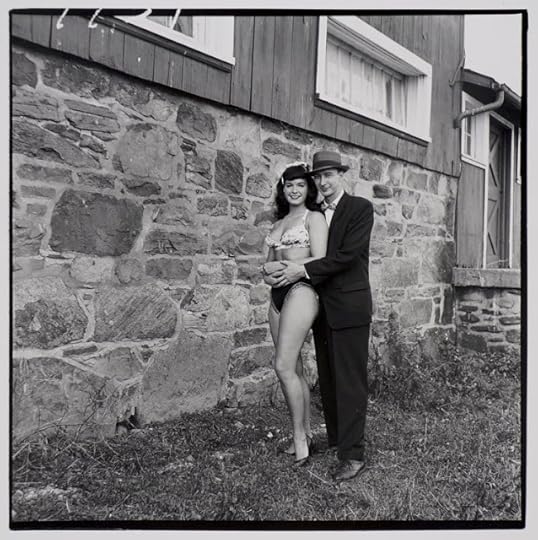
Yes, that is Bettie Page on the front cover, and as discussed elsewhere in this blog Bettie was a woman who knew how to walk, especially in high heels. What she has to do with the homelessness of fish I don’t know. In any case, a Bettie Page image is a very fine thing to have on the jacket of your novel, although it might raise expectations the author couldn’t possibly fulfill.

Published on January 25, 2018 07:34
January 19, 2018
WALKING AND HIDING
Even before I lived in Los Angeles, I was still an occasional Hollywood Walker. I used to come as a tourist and I usually stayed in a hotel on Franklin Avenue, and I’d get up in the morning and wander the streets, looking at the houses and the cars and the flora, and it all seemed a kind of fantasy land. I didn’t take many photographs but on one of my walks I took this picture of a house.

At the time I didn't really consider my motives, but thinking about it now, I reckon I took it because the place struck me as both very typical and very special, thoroughly Californian, without being a cliché of Hollywood architecture, and completely unlike any house you might find in England. It seemed cheerful and optimistic – I guess that was the color. It wasn’t exactly modest but it wasn’t a mansion; you could just about imagine yourself living there.
Well, I took the picture and pretty much forget about it for the best part of 15 years, but then the other day I came across it again and I realized that the house really wasn’t so very far from the places I currently go on my neighborhood walks, and so I took my camera and set off with the intention of doing one of those “now and then” comparisons. I tried to stand in the same spot, and what I saw this:

The house hadn’t disappeared but it had gone into hiding. I wouldn’t have been sure I even had the right house if it hadn’t been for that curious spherical “streetlamp.” Not to labor the obvious, but there has been some exuberant growth, huge trees that weren’t there at all 15 years go. Is that intention or just neglect? And of course the chainlink fence has been changed to wooden slats, and the gate looks like this, indicating that it’s now two homes rather than one, but possibly it always was.
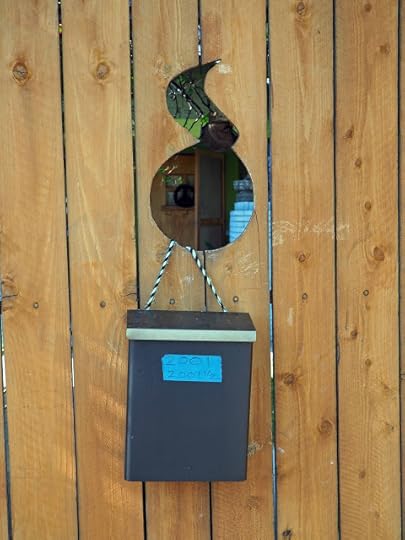
You have to go round the side before you can really see the house at all. And I must say it looks less special and less optimistic. There’s been a complete change of color on those shingles, but have they been replaced or have they just faded to their current shade? But then the owners have kept the paint color on the bricks. Or maybe they've just done nothing, Things change but sometimes they also endure.

There was a woman in the garden, and in certain circumstances I might have talked to her and told her what I’ve told you, but as it was I didn’t. She might have thought I was weird. But I did go home and check out the house on Google, because that's the kind of thing you can do these days, and in this picture, taken in a different season, it’s even more hidden:



At the time I didn't really consider my motives, but thinking about it now, I reckon I took it because the place struck me as both very typical and very special, thoroughly Californian, without being a cliché of Hollywood architecture, and completely unlike any house you might find in England. It seemed cheerful and optimistic – I guess that was the color. It wasn’t exactly modest but it wasn’t a mansion; you could just about imagine yourself living there.
Well, I took the picture and pretty much forget about it for the best part of 15 years, but then the other day I came across it again and I realized that the house really wasn’t so very far from the places I currently go on my neighborhood walks, and so I took my camera and set off with the intention of doing one of those “now and then” comparisons. I tried to stand in the same spot, and what I saw this:

The house hadn’t disappeared but it had gone into hiding. I wouldn’t have been sure I even had the right house if it hadn’t been for that curious spherical “streetlamp.” Not to labor the obvious, but there has been some exuberant growth, huge trees that weren’t there at all 15 years go. Is that intention or just neglect? And of course the chainlink fence has been changed to wooden slats, and the gate looks like this, indicating that it’s now two homes rather than one, but possibly it always was.

You have to go round the side before you can really see the house at all. And I must say it looks less special and less optimistic. There’s been a complete change of color on those shingles, but have they been replaced or have they just faded to their current shade? But then the owners have kept the paint color on the bricks. Or maybe they've just done nothing, Things change but sometimes they also endure.

There was a woman in the garden, and in certain circumstances I might have talked to her and told her what I’ve told you, but as it was I didn’t. She might have thought I was weird. But I did go home and check out the house on Google, because that's the kind of thing you can do these days, and in this picture, taken in a different season, it’s even more hidden:


Published on January 19, 2018 16:27
January 17, 2018
WALKING IN THE PAST

Back in the day I used to fancy myself as a bit of a “street photographer” (not a lot of a street photographer, just a bit). I used to walk around in my lunch hour with a camera, and inevitably I’d take pictures of people walking.

And it’s a funny thing, isn’t it, how the Internet is both so of the moment but also so nostalgic and backward looking. Beause of social media I constantly see photographs from people’s childhoods and college years, that I’d never have seen pre-Internet.
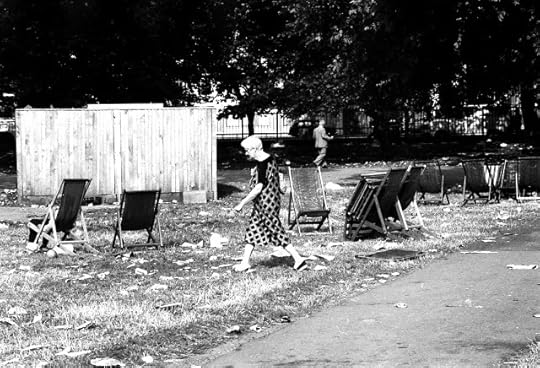
And so here are some of the pictures I took back then.
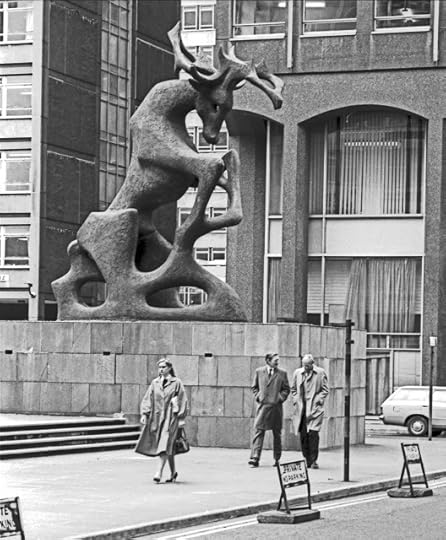
I’m not absolutely sure of the dates – very early 1980s I think. All the ones above were taken in London. The ones below were taken in Sheffield:

and Scarborough:
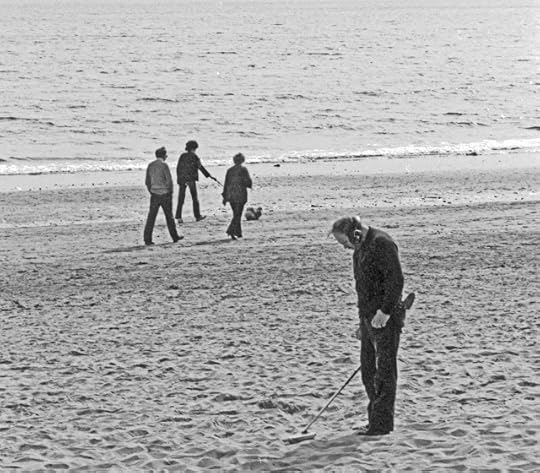

Published on January 17, 2018 15:45
January 12, 2018
TWO STEPS BEHIND (DEF LEPPARD ALLUSION)

If you’re like me and you’re walking in West Hollywood and you see a monster truck like the one above your first thought may well be, “I bet the driver of that thing has some issues with small penis syndrome.” But wait. It gets more complicated. Go round the the back of the truck and you’ll see that this is a commercial vehicle belonging to a company called Vagina Guitars, who make custom instruments.

Now, you can kind of see their problem, even if it’s a self-inflicted one. With a name like that there’s a danger your product might be thought of as a bit girly. You don’t want to drive around in some cute little pink thing, therefore you go for the monster truck, so I guess it is a form of compensation after all.
In fact the truck it was parked round the corner from the Guitar Center on Sunset Boulevard, which has the Hollywood RockWalk (that’s a registered trademark so be careful), featuring the handprints of a very mixed bag of musicians, mostly but not only guitarists.Obviously it’s an echo of the handprints in the cement at Grauman's Chinese, on Hollywood Boulevard. They have foot and shoe prints there too, as well as hand prints.


But there’s only a single footprint at the Guitar Center. It belongs to Rick Allen of Def Leppard who only has one arm, having the lost the other in a car crash in Derbyshire. Therefore he placed one hand and one foot into the cement.

The small child’s handprint belongs to his daughter Lauren.


Published on January 12, 2018 20:38
January 8, 2018
YOUR ONLY MAN
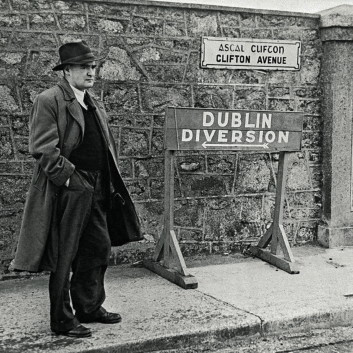
I’m in the middle of a mild Flann O’Brien obsession. He belongs to the great sodality of the walking drinking writer. The name was an invention, the pseudonym, of Brian O’Nolan, and I don’t think he was deliberately trying to invoke flaneurism, but now that name inevitably does.Here, one of his narrators in At Swim-Two-Birds, is writing about walking:
“Purpose of walk: Discovery and embracing of virgins
“We attained nothing on our walk that was relevant to the purpose thereof but we filled up the loneliness of our souls with the music of our two voices, dog-racing, betting and offences against chastity being the several subjects of our discourse. We walked many miles together on other nights on similar missions - following matrons, accosting strangers, representing to married women that we were their friends, and gratuitously molesting members of the public. One night we were followed in our turn by a member of the police force attired in civilian clothing. On the advice of Kelly we hid ourselves in the interior of a church until he had gone. I found that walking was beneficial to my health.”
Well, who could disagree? Can you be a flaneur on a bike? Almost certainly, as O’Brien suggested in The Third Policeman, although the process was not without its dangers, largely that the rider might become part bicycle. Not that walking is a piece of cake, either.
“The continual cracking of your feet on the road makes a certain quantity of road come up into you. When a man dies they say he returns to clay but too much walking fills you up with clay far sooner (or buries bits of you along the road) and brings your death half-way to meet you. It is not easy to know what is the best way to move yourself from one place to another.”
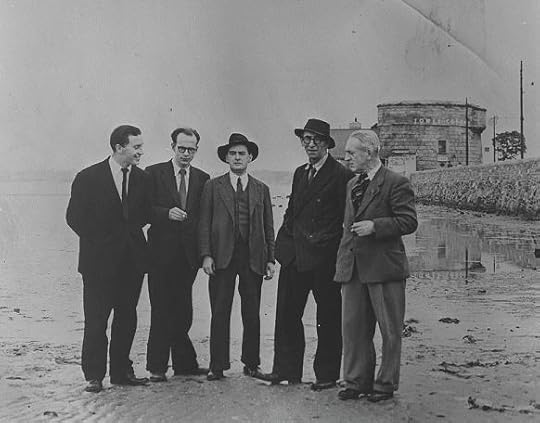
There is a remarkable bit of film of O’Nolan/O’Brien, in the company of Patrick Kavanagh, Anthony Cronin and others celebrating Bloomsday. Drink appears to have been taken and is affecting the walking style.
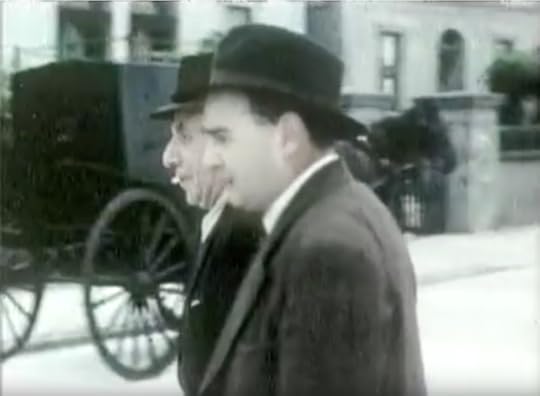
The footage seems utterly ancient, not least because it's silent, but also because of the horse and carriage they’ve hired for the occasion, and then suddenly a Volkswagen Beetle appears:
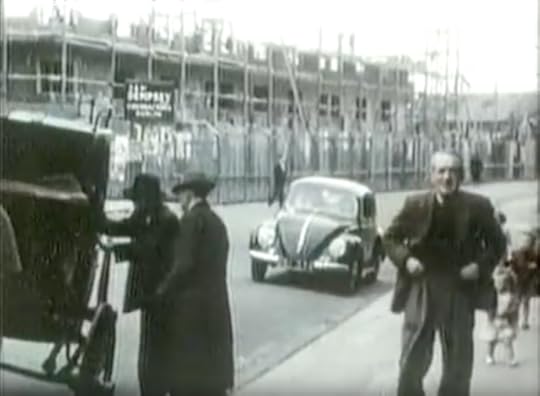
The celebration is taking place in 1954, a half century after the June 16th on which Ulyssestakes place. You can find the clip here on Youtube:
https://www.youtube.com/watch?v=A0gNNWHmj9Q

Published on January 08, 2018 11:43
January 3, 2018
WALKING DiSQUIETLY
One way or another, it seems that Fernando Pessoa (1888-1935) is always with us. I’ve owned a copy of The Book of Disquiet for a good long time, and I turn to it more often than many books on my shelves. My “reading technique” is to open it at random and read a couple of fragments, a reasonable method it seems to me, and one recommended by the translator – Richard Zenith - though I arrived there under my own steam, since it’s a book of fragments, assembled posthumously from 30,000 items found in two huge wooden trunks belonging to Pessoa.
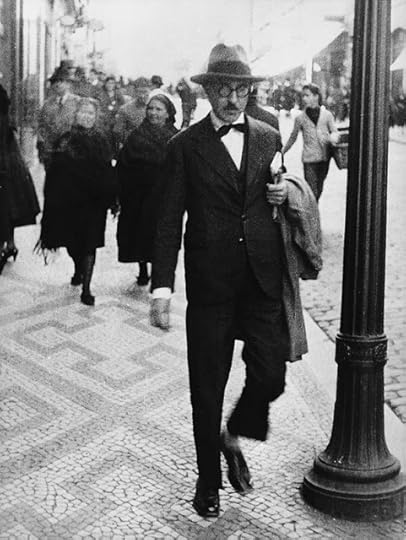
I never love the writing as much as I feel ought to, and some would say it’s a consciously unlovable text, but I do enjoy his stuff about walking and (for want of a better term) urban exploration, such as this: “Walking on these streets, until the night falls, my life feels to me like the life they have. By day they’re full of meaningless activity; by night, they’re full of meaningless lack of it. By day I am nothing, and by night I am I. There is no difference between me and these streets, save they being streets and I a soul, which perhaps is irrelevant when we consider the essence of things.” The man who walks the street becomes like the street: I like that a lot.
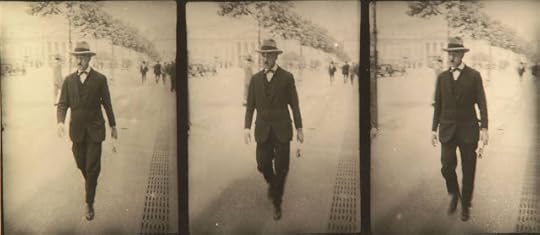
Or this: “More than once, while roaming the streets in the late afternoon I’ve been suddenly and violently struck by the bizarre presence of organization in things. It’s not so much natural things that arouse this powerful awareness in my soul; it’s the layout of the streets, the signs, the people dressed up and talking, their jobs, the newspapers, the logic of it all. Or rather, it’s the fact that ordered streets, signs, jobs, people and society exist, all of them fitting together and going forward and opening up paths.”Or indeed this: “Everyone has his alcohol. To exist is alcohol enough for me. Drunk from feeling I wander as I walk a straight ahead.” Apparently Pessoa liked actual alcohol too.
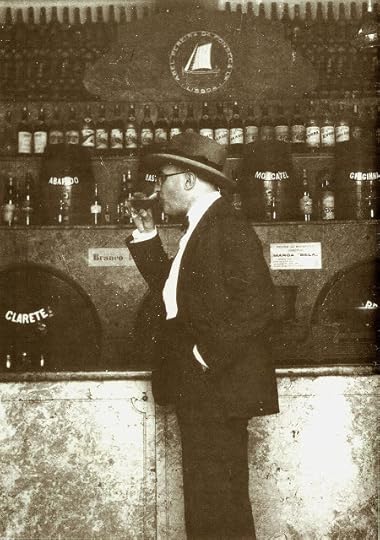
I knew that Pessoa lived in Lisbon for 30 years of his adult life, and rarely left the place (he’d lived in Durban as a child) but what I didn’t know till recently was that he wrote, though of course didn’t publish, a guidebook to the place, running to 88 pages, written in English and published as Lisbon: What the Tourist Should See.Writing about that book and Pessoa in general for the Los Angeles Review of Books, Casey Walker, author of Last Days in Shanghai wrote, “Pessoa doesn’t ever seem to have had much interest, sexually, in women — or in men — but in all his time lingering in coffee houses and restaurants, in long and solitary walks around the city, he must have learned the places of surreptitious assignation, courtship, and romance … What I want to know is: Where in Pessoa’s Lisbon did people go when they needed to weep for how the world goes? Or where did they go to profess their lasting love? I want to go to these places, too. Perhaps Pessoa considered this knowledge too confidential to consign it even to his manuscript trunk.”I’m not convinced that a man with no interest in sex would know “places of surreptitious assignation, courtship, and romance” but maybe he did.
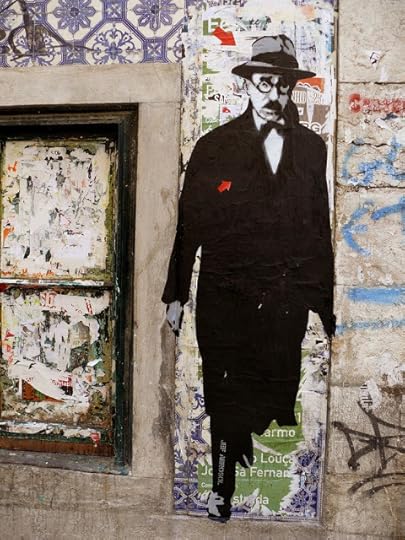
Even less did I realize that Pessoa wrote his own version, a fragment naturally, of Poe’s “The Man of the Crowd” - which by many accounts is the ur text for a certain kind of flaneurism and psychogeography. Pessoa puts words in the mouth (or at least an internal monologue in the head) of the man of the crowd, and has him narrate,“I became a man of the crowd. I never trusted myself alone. From night unto morn, and from morn unto night I elbowed speedily through crowds, clinging affrightedly to whom I could. Many thought me a thief. But I pressed my body against their bodies as a child clings to its mother during a thunderstorm. I tried to close up my mind's eye as a child seeks to escape the sight of the lightening; I strove to close my mental ears, as a child seeks by burying its head in its mother's lap to hear not the crash of the thunderbolt. And if there were a short gap in the walkers, I would hurry, run, my arms outstretched, eager for the touch of somebody's frame, my own body eager for a shrinking contact. And always, always, amid the shuffle and the tramp of all footfalls, I shivered to hear that firm, inexorable tread.” That doesn’t really match up with my idea of Poe’s man, and in fact it sounds far more like Pessoa than it does like Poe, which may be the whole point.
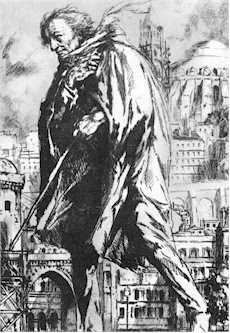
On the subject of writing itself Pessoa offers this, “While out walking I’ve formulated perfect phrases which I can’t remember when I get home. I’m not sure if the ineffable poetry of these phrases belongs totally to what they were and which I forget, or partly to what they after all weren’t.”
No use suggesting he could have got himself a moleskine, I expect.

I never love the writing as much as I feel ought to, and some would say it’s a consciously unlovable text, but I do enjoy his stuff about walking and (for want of a better term) urban exploration, such as this: “Walking on these streets, until the night falls, my life feels to me like the life they have. By day they’re full of meaningless activity; by night, they’re full of meaningless lack of it. By day I am nothing, and by night I am I. There is no difference between me and these streets, save they being streets and I a soul, which perhaps is irrelevant when we consider the essence of things.” The man who walks the street becomes like the street: I like that a lot.

Or this: “More than once, while roaming the streets in the late afternoon I’ve been suddenly and violently struck by the bizarre presence of organization in things. It’s not so much natural things that arouse this powerful awareness in my soul; it’s the layout of the streets, the signs, the people dressed up and talking, their jobs, the newspapers, the logic of it all. Or rather, it’s the fact that ordered streets, signs, jobs, people and society exist, all of them fitting together and going forward and opening up paths.”Or indeed this: “Everyone has his alcohol. To exist is alcohol enough for me. Drunk from feeling I wander as I walk a straight ahead.” Apparently Pessoa liked actual alcohol too.

I knew that Pessoa lived in Lisbon for 30 years of his adult life, and rarely left the place (he’d lived in Durban as a child) but what I didn’t know till recently was that he wrote, though of course didn’t publish, a guidebook to the place, running to 88 pages, written in English and published as Lisbon: What the Tourist Should See.Writing about that book and Pessoa in general for the Los Angeles Review of Books, Casey Walker, author of Last Days in Shanghai wrote, “Pessoa doesn’t ever seem to have had much interest, sexually, in women — or in men — but in all his time lingering in coffee houses and restaurants, in long and solitary walks around the city, he must have learned the places of surreptitious assignation, courtship, and romance … What I want to know is: Where in Pessoa’s Lisbon did people go when they needed to weep for how the world goes? Or where did they go to profess their lasting love? I want to go to these places, too. Perhaps Pessoa considered this knowledge too confidential to consign it even to his manuscript trunk.”I’m not convinced that a man with no interest in sex would know “places of surreptitious assignation, courtship, and romance” but maybe he did.

Even less did I realize that Pessoa wrote his own version, a fragment naturally, of Poe’s “The Man of the Crowd” - which by many accounts is the ur text for a certain kind of flaneurism and psychogeography. Pessoa puts words in the mouth (or at least an internal monologue in the head) of the man of the crowd, and has him narrate,“I became a man of the crowd. I never trusted myself alone. From night unto morn, and from morn unto night I elbowed speedily through crowds, clinging affrightedly to whom I could. Many thought me a thief. But I pressed my body against their bodies as a child clings to its mother during a thunderstorm. I tried to close up my mind's eye as a child seeks to escape the sight of the lightening; I strove to close my mental ears, as a child seeks by burying its head in its mother's lap to hear not the crash of the thunderbolt. And if there were a short gap in the walkers, I would hurry, run, my arms outstretched, eager for the touch of somebody's frame, my own body eager for a shrinking contact. And always, always, amid the shuffle and the tramp of all footfalls, I shivered to hear that firm, inexorable tread.” That doesn’t really match up with my idea of Poe’s man, and in fact it sounds far more like Pessoa than it does like Poe, which may be the whole point.

On the subject of writing itself Pessoa offers this, “While out walking I’ve formulated perfect phrases which I can’t remember when I get home. I’m not sure if the ineffable poetry of these phrases belongs totally to what they were and which I forget, or partly to what they after all weren’t.”
No use suggesting he could have got himself a moleskine, I expect.

Published on January 03, 2018 06:44
December 27, 2017
TWO OTHER COUNTRIES
I was hunkered down for part of the holiday with the works of Japanese photographer Daido Moriyama, including “Record No.36” - in Japanese “Kiroku” - the latest in his series of diaristic monographs that date back as far as 1972. This is from that volume:
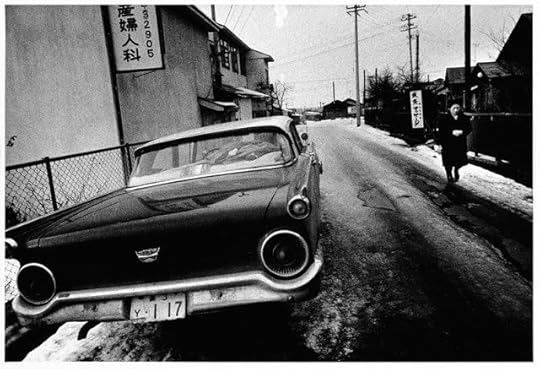
Moriyama has been around, in many senses. Currently aged 79 he’s taken vast numbers of photographs, published a great many books (if not as many as his pal Araki), and also done a great amount of walking. He may not, strictly speaking, be a street photographer (a term that seems ever more meaningless) but he’s definitely a flaneur. His photographs are a record of his wanderings and also the reason for his wandering.

And of course sometimes he photographs other walkers. And of course some of these walkers are women.

I started digging out some writings and interviews with the great man. There’s this from the afterword to “Record No. 34,” “I am crisscrossing the central Tokyo area taking snapshots in the streets more or less on a daily basis. Within this routine, every once in a while it happens that I am suddenly overcome by a sense of bewilderment, just like a student in his first year at a photography school. What exactly am I trying to see through the finder of my camera? What is that photo that I just shot? It's questions as utterly naïve and elementary as these that occupy my mind in such situations.”

And there’s this from a documentary the Tate Gallery made about him a few years back, “I basically walk quite fast. I like taking snapshots in the movement of both myself and the outside world. When I walk around I probably look like a street dog because after walking around the main roads, I keep wandering around the back streets.”This is probably his best known picture: of a street dog:
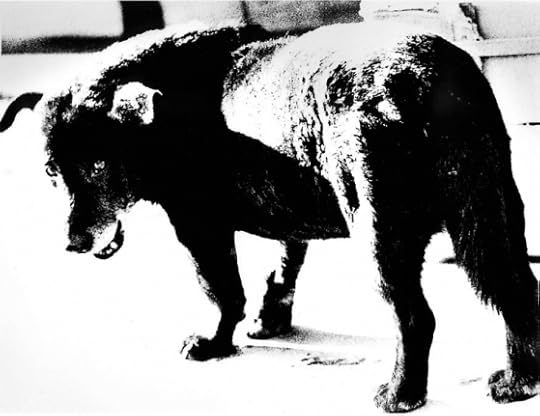
He continues, “My friends or critics are often surprised and ask me why I never got bored walking around for over 50 years. But I never get bored. I often hear it is said that people, even photographers, do their best work when they are in their 20’s and 30’s. I’m 73 now. But I could never see the city with an old man’s eyes, or as if I understood everything.“Everyone has desires. The quality and the volume of those desires change with age. But that desire is always serious and real. Photography is an expression of those desires …“I have always felt that the world is an erotic place. As I walk through it my senses are reaching out. And I am drawn to all sorts of things. For me cities are enormous bodies of people’s desires. And as I search for my own desires within them, I slice into time, seeing the moment.”
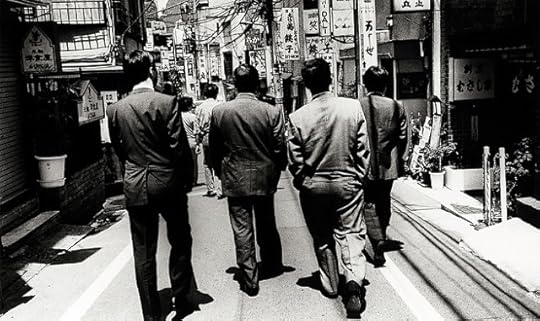
Well, the erotics of walking and the erotics of photography are not exactly the same, but there’s surely plenty of overlap. Taking pictures of women in the street is currently regarded as a very dodgy activity. I think it’s still OK to look at people you fancy, so long as you don’t touch or say anything appropriate. And taking photographs creates its own set of problem. It’s probably OK if you’re making art, not OK if you go home and lech over the images. But who can read the intentions of the male gaze?
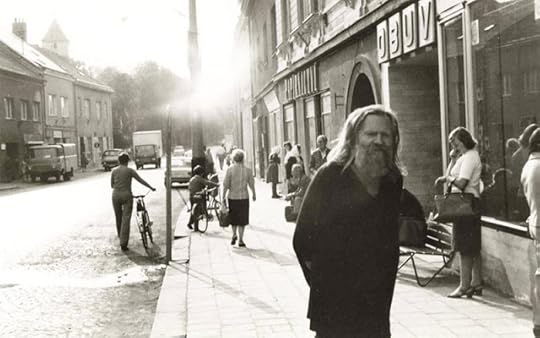
I saw recently that the Christie’s website describes photographer Miroslav Tichy as a flaneur, thus: “From the 1950s to 1986, Tichý took thousands of surreptitious photographs in and around Kyjov, in the Czech Republic. With his wild hair and ragged clothes, locals viewed him as a harmless eccentric — but in many ways his art can be seen as a subversive act in response to a totalitarian regime.
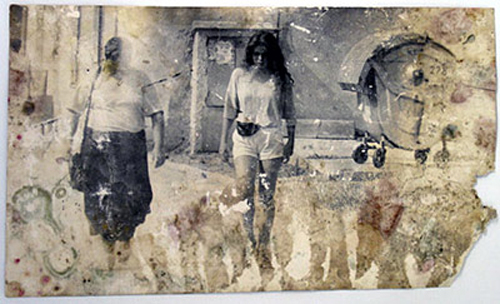
“In the 1950s, he began to focus on photography, using an array of crude homemade cameras … He built his contraptions from scrap — cardboard tubes, tin cans and the like — sealed with tar, and operated by bobbins and dressmaker’s elastic. He cut lenses from plexiglass — even devising his own telephoto lens.

“’These chance encounters, fleeting moments captured on film, have a distinctive Baudelairean flair,’ says Christie’s specialist Amanda Lo Iacono. ‘Indeed what we find so captivating about Tichý’s work today is how the artist acted as the quintessential flaneur, whose practice became inseparable from his way of life.’”
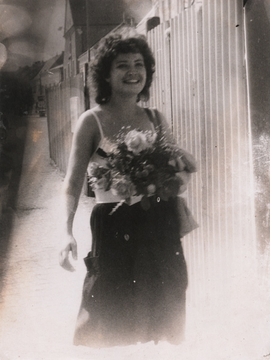
Well, you’ve said a mouthful there, Amanda. Tichy’s “practice” involved wandering the streets, and sometimes hiding in the bushes, taking pictures of women, some of them walking, some of them in various states of undress.
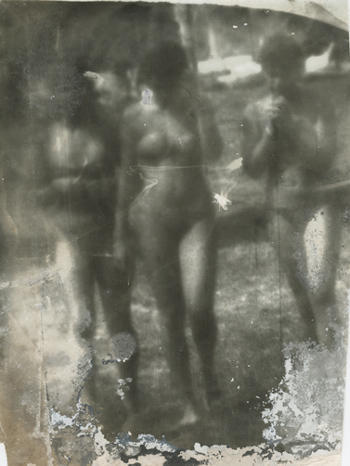
Geoff Dyer in the Guardian says, “Put as simply as possible, he spent his time perving around Kyjov, photographing women. Ideally he'd catch them topless or in bikinis at the local swimming pool; failing that, he'd settle for a glimpse of knee or - the limitations of the camera meant the framing was often askew - ankle.”

Yes, I suppose flaneurism is what flaneurism does. Likewise perving. But that was in another country, and besides the guy is dead.


Moriyama has been around, in many senses. Currently aged 79 he’s taken vast numbers of photographs, published a great many books (if not as many as his pal Araki), and also done a great amount of walking. He may not, strictly speaking, be a street photographer (a term that seems ever more meaningless) but he’s definitely a flaneur. His photographs are a record of his wanderings and also the reason for his wandering.

And of course sometimes he photographs other walkers. And of course some of these walkers are women.

I started digging out some writings and interviews with the great man. There’s this from the afterword to “Record No. 34,” “I am crisscrossing the central Tokyo area taking snapshots in the streets more or less on a daily basis. Within this routine, every once in a while it happens that I am suddenly overcome by a sense of bewilderment, just like a student in his first year at a photography school. What exactly am I trying to see through the finder of my camera? What is that photo that I just shot? It's questions as utterly naïve and elementary as these that occupy my mind in such situations.”

And there’s this from a documentary the Tate Gallery made about him a few years back, “I basically walk quite fast. I like taking snapshots in the movement of both myself and the outside world. When I walk around I probably look like a street dog because after walking around the main roads, I keep wandering around the back streets.”This is probably his best known picture: of a street dog:

He continues, “My friends or critics are often surprised and ask me why I never got bored walking around for over 50 years. But I never get bored. I often hear it is said that people, even photographers, do their best work when they are in their 20’s and 30’s. I’m 73 now. But I could never see the city with an old man’s eyes, or as if I understood everything.“Everyone has desires. The quality and the volume of those desires change with age. But that desire is always serious and real. Photography is an expression of those desires …“I have always felt that the world is an erotic place. As I walk through it my senses are reaching out. And I am drawn to all sorts of things. For me cities are enormous bodies of people’s desires. And as I search for my own desires within them, I slice into time, seeing the moment.”

Well, the erotics of walking and the erotics of photography are not exactly the same, but there’s surely plenty of overlap. Taking pictures of women in the street is currently regarded as a very dodgy activity. I think it’s still OK to look at people you fancy, so long as you don’t touch or say anything appropriate. And taking photographs creates its own set of problem. It’s probably OK if you’re making art, not OK if you go home and lech over the images. But who can read the intentions of the male gaze?

I saw recently that the Christie’s website describes photographer Miroslav Tichy as a flaneur, thus: “From the 1950s to 1986, Tichý took thousands of surreptitious photographs in and around Kyjov, in the Czech Republic. With his wild hair and ragged clothes, locals viewed him as a harmless eccentric — but in many ways his art can be seen as a subversive act in response to a totalitarian regime.

“In the 1950s, he began to focus on photography, using an array of crude homemade cameras … He built his contraptions from scrap — cardboard tubes, tin cans and the like — sealed with tar, and operated by bobbins and dressmaker’s elastic. He cut lenses from plexiglass — even devising his own telephoto lens.

“’These chance encounters, fleeting moments captured on film, have a distinctive Baudelairean flair,’ says Christie’s specialist Amanda Lo Iacono. ‘Indeed what we find so captivating about Tichý’s work today is how the artist acted as the quintessential flaneur, whose practice became inseparable from his way of life.’”

Well, you’ve said a mouthful there, Amanda. Tichy’s “practice” involved wandering the streets, and sometimes hiding in the bushes, taking pictures of women, some of them walking, some of them in various states of undress.

Geoff Dyer in the Guardian says, “Put as simply as possible, he spent his time perving around Kyjov, photographing women. Ideally he'd catch them topless or in bikinis at the local swimming pool; failing that, he'd settle for a glimpse of knee or - the limitations of the camera meant the framing was often askew - ankle.”

Yes, I suppose flaneurism is what flaneurism does. Likewise perving. But that was in another country, and besides the guy is dead.

Published on December 27, 2017 09:15
December 21, 2017
HOLLYWOOD WALKS, CONSTRAINED AND OTHERWISE

I was at a party a couple of nights back and got talking to guy who’d grown up in Hollywood in the early nineties. He went to Hollywood High, alma mater of Keith Carradine, Linda Evans, Fay Wray and Terry Richardson – to name a broad selection.

And the guy said that any time you walked in Hollywood in the early 90s you were always in danger of turning a corner and realizing you’d set foot in the “wrong” street, and then you’d be confronted by junior gang members who demanded to know what you were doing on “their” street. The answer, “I’m just walking home from school,” wasn’t a good enough answer.

Of course, he said, you learned the rules pretty fast one way or another, learned where you could walk and where you couldn’t, but there was always this lurking anxiety that you might get it wrong. And some people think that Hollywood has become too safe and gentrified, eh? Yeah, don’t you just hate it when there are no gang members confronting you on the street?
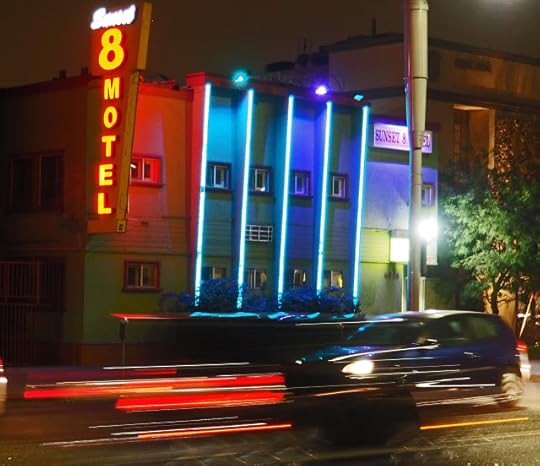
I’m not naïve enough to think that Hollywood is now an entirely safe haven of peace and tranquility, but as you walk around you don’t worry much about straying into enemy territory. And of course it being Christmas and all, Hollywood looks pretty festive right now. Even if the inhabitants behind this particular window haven’t quite got into the Christmas spirit yet:


Published on December 21, 2017 11:42
December 18, 2017
COMBUSTIBLE WALKING
Did you see this in the London Evening Standard? Spontaneous human combustion is one of those things that I look into every now and then in a brief intense way and then forget about. Still, I don’t think I ever heard of anybody combusting while walking.*
Man bursts into flames and dies in front of horrified onlookers while walking down London street
Specialist fire investigators found no obvious reason why John Nolan, 70, might have caught alight
JUSTIN DAVENPORT Crime Editor
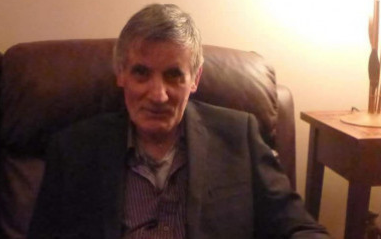
John Nolan, 70, caught fire in a street in Haringey and died
Police today appealed for witnesses after a man died after catching fire as he walked down a street in north London
Passers-by saw John Nolan, 70, ablaze in a street in Haringey in the middle of the day and attempted to put out the flames before calling police and fire crews.
The former construction worker, who was originally from County Mayo in Ireland, was taken to a specialist hospital but died later.
Today detectives said his death was being treated as unexplained. There were no accelerants found on his body and specialist fire investigators could find no obvious reason for Mr Nolan to catch alight.Mr Nolan, who lived in Haringey, was found in Orchard Place at 1pm on Sunday September 17 after calls from the public.
PC Damien Ait-Amer, who is investigating the death, said: “We have spoken with a number of witnesses who saw Mr Nolan ablaze, but we have yet to establish how the fire started.
“Mr Nolan was a well-liked member of the community and none of our enquiries so far have indicated that he had been involved in a dispute of any sort. Nor does any account given by witnesses suggest that he had been in contact with another person at the time of the fire.”
*

Most of the literature will tell you there’s no such thing as SHC, and Charles Dickens often gets the blame for spreading the urban myth. He seems to have believed in it, not least as a plot device: in Bleak House Mr. Krook, a man in the recycling trade, does indeed die that way, though not while walking. This from Dickens’ 1853 preface to the novel.
“The possibility of what is called spontaneous combustion has been denied since the death of Mr. Krook; and my good friend Mr. Lewes (quite mistaken, as he soon found, in supposing the thing to have been abandoned by all authorities) published some ingenious letters to me at the time when that event was chronicled, arguing that spontaneous combustion could not possibly be. I have no need to observe that I do not wilfully or negligently mislead my readers and that before I wrote that description I took pains to investigate the subject. There are about thirty cases on record, of which the most famous, that of the Countess Cornelia de Baudi Cesenate, was minutely investigated and described by Giuseppe Bianchini, a prebendary of Verona, otherwise distinguished in letters, who published an account of it at Verona in 1731, which he afterwards republished at Rome. The appearances, beyond all rational doubt, observed in that case are the appearances observed in Mr. Krook's case. The next most famous instance happened at Rheims six years earlier, and the historian in that case is Le Cat, one of the most renowned surgeons produced by France. The subject was a woman, whose husband was ignorantly convicted of having murdered her; but on solemn appeal to a higher court, he was acquitted because it was shown upon the evidence that she had died the death of which this name of spontaneous combustion is given. I do not think it necessary to add to these notable facts, and that general reference to the authorities which will be found at page 30, vol. ii., the recorded opinions and experiences of distinguished medical professors, French, English, and Scotch, in more modern days, contenting myself with observing that I shall not abandon the facts until there shall have been a considerable spontaneous combustion of the testimony on which human occurrences are usually received.”
*
Alcohol is often given as a factor in SHC, as in this cartoon - the large sign for Old Tom
suggests that Pa had been knocking back the gin. It also suggests he was walking at the
time.
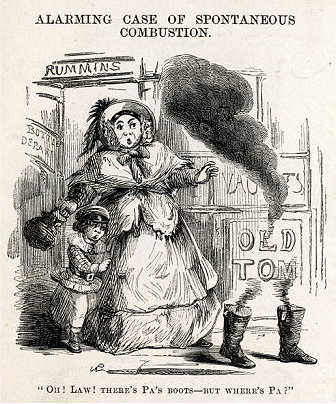

Published on December 18, 2017 15:42
Geoff Nicholson's Blog
- Geoff Nicholson's profile
- 55 followers
Geoff Nicholson isn't a Goodreads Author
(yet),
but they
do have a blog,
so here are some recent posts imported from
their feed.



